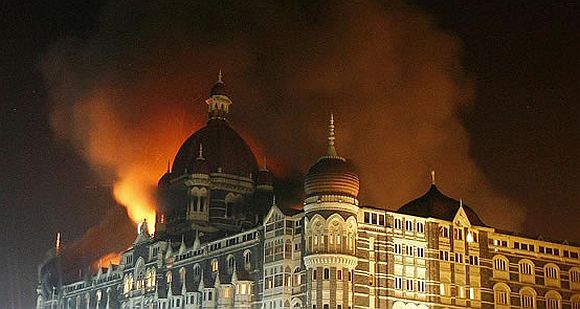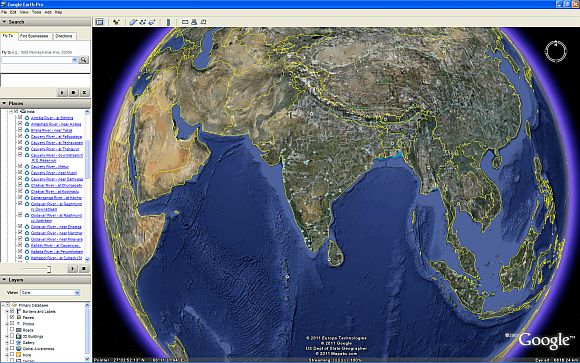Photographs: Wikimedia Commons
The Mumbai attack perpetrated by Pakistan-based Lashkar-e-Tayiba was an example of how terror outfits use latest available IT tools for their decisive motives, a top US commander has said, highlighting the role of cyber space in such events.
"All the mission planning (for Mumbai terrorist attack) was done via Google Earth. There was no investment in technology of (intelligence, surveillance and reconnaissance) platforms or anything like that," US Marine Corps Lt Gen George Flynn, Joint Staff's director of joint force development, said.
Flynn stated this in his address to the sixth annual 2012 Joint Warfighting Conference in Virginia Beach.
During the Mumbai attack, Flynn said, terrorists used cellular phone networks as command and control and social media to track and thwart the efforts of Indian commandos.
...
Terror outfits are lapping up the World Wide Web
Photographs: Wikimedia Commons
"How much technology or how much investment was made to create that terrorist capability?" asked the Pentagon commander.
Flynn argued that the homeland is now part of the battle space as the pace of change is increasing. As a result of which adversaries are taking advantage of change.
That trend is likely to increase in the near future, he cautioned.
"If you like the complexity and uncertainty of today, you're really going to like tomorrow," Flynn said.
He noted that the terrorists behind the Mumbai attack exploited inexpensive and commonly available assets to plan and execute their onslaughts.
...
Terror outfits are lapping up the World Wide Web
Photographs: Wikimedia Commons
They conducted their mission planning using Google Earth, and they used conventional cell networks to carry out their command and control.
When a tourist snapped and posted on the Web a cell phone photo of Indian army commandos dropping on the roof of the hotel, the terrorists used it to lay a trap to ambush the would-be rescuers. This was accomplished without any investment in expensive technologies or systems, Flynn said.
"Space and cyber will continue to play an increased role in events, with each becoming increasingly contested domains -- so it is a new domain that we're going to have to contest," Flynn said.
...
Terror outfits are lapping up the World Wide Web
Photographs: Wikimedia Commons
"Security challenges will have both local and global aspects, we think, with events occurring across the globe," he added.
This democratisation of technology is closing the gap between the West and its enemies, he said.
The battle space of the past was linear with clear definitions, while the future battle space is multidimensional with several domains, he argued.
Click on NEXT to go further...





article